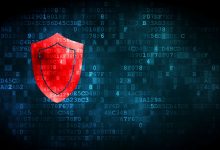Ransomware Recovery: Best Practices for restoring your files
Ransomware attacks have become an increasingly prevalent threat in the digital landscape. These malicious attacks encrypt your files and hold them hostage until a ransom is paid. The consequences of falling victim to ransomware can be devastating, especially for businesses that heavily rely on their digital assets. However, with the right precautions and best practices, you can significantly improve your chances of ransomware recovery and restore your files without giving in to the demands of cybercriminals.
1. Prevention is Key:
While this article focuses on recovery, it is important to emphasize that prevention should be your primary objective. Regularly back up your files and store them in offline or offsite locations. Consistent backups ensure that even if your files are encrypted, you can restore them from a recent backup. Additionally, stay educated about the latest ransomware threats and maintain robust cybersecurity measures such as firewall protection, antivirus software, and intrusion detection systems.
2. Disconnect from the Network:
At the first sign of a ransomware attack, it is crucial to isolate the affected device from the network immediately. By disconnecting from the network, you can minimize further damage and prevent the ransomware from spreading to other devices or accessing additional file systems. Unplug network cables, disable Wi-Fi, and turn off Bluetooth to ensure the malware is effectively contained.
3. Report the Incident:
Once your system is isolated, report the ransomware attack to your IT department or cybersecurity team. They will guide you through proper incident response procedures to mitigate the impact and secure your network. Engaging the right experts can help identify the type of ransomware and explore potential decryption tools that might be available.
4. Preserve Evidence:
Preserving evidence is crucial for law enforcement and forensic investigations. Take screenshots of any ransom messages or error codes you encounter during the attack. Document the exact time and date of the incident and any suspicious files or emails that may have initiated the infection. This evidence can assist authorities in tracing the attack and potentially leading to the apprehension of the perpetrators.
5. Remove the Ransomware:
Before attempting ransomware recovery, it is essential to remove the malware from your system. Utilize offline antivirus scanners or malware removal tools to scan and clean infected files. Do not initiate this process until you have completely disconnected from the network and prepared an isolated environment for recovery.
6. Identify the Type of Ransomware:
Understanding the specific type of ransomware that infected your system is crucial for effective recovery. Some ransomware variants have known decryption methods or tools available. By identifying the malware, you can consult with experts or utilize online resources that may provide decryption keys or recovery options specific to it.
7. Seek Professional Assistance:
In many cases, decryption or ransomware recovery may not be possible without professional assistance. Companies specializing in cybersecurity or data recovery have experience dealing with various ransomware attacks. Their expertise and tools can significantly improve your chances of success and prevent further data loss.
8. Rebuild Systems and Keep Updated:
Once your files have been successfully recovered, it is important to rebuild your systems and ensure that all necessary updates, patches, and security measures are in place. Consider strengthening your cybersecurity protocols, employee awareness training, and implementing multi-factor authentication to minimize the risk of future attacks.
Ransomware attacks can be stressful and disruptive, but with proper preparation and response, you can proactively protect your valuable files from encryption. Remember, prevention is crucial, but in the unfortunate event of an attack, following these best practices can help you swiftly recover your files and restore normalcy to your digital operations.



